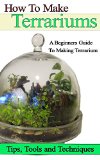I have two tutorials specifically for making a moss terrarium:
A Moss Terrarium - The Beginner tutorial

I have just started working on some Moss terrariums and I have some thoughts, pictures and informatio on them. terrarium is attractive, fun to make and very hardy. Here is a complete tutorial on how to make one. Moss Terrariums
A Moss Terrarium - The intermediate tutorial

I have also completed a second moss terrarium tutorial that is a little more complex and more attractive. It is located here: How to make a moss terrarium part 2
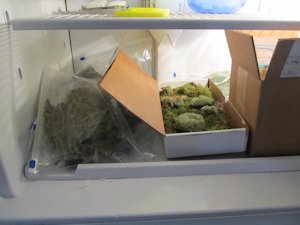
Tip on keeping moss - Did you know that moss will keep well in the freezer for an indefinite period of time. It goes dormant. You can leave it in there for a year or more and it will be fine. This way if you order moss and don't need it all you can preserve it for a later project.
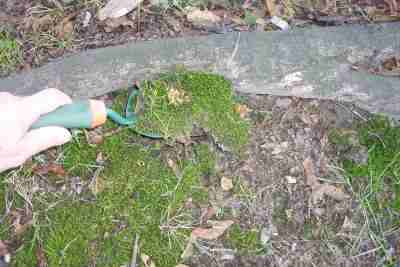
Big tips on collecting moss from outside - First off you should take careful notice of how it lived in the outside world. Was it clinging to a rock? Was it in the shade? Against the side of a tree? Notice this because that is the natural habitat of the moss and you want to simulate this in the terrarium. Secondly - the soil that the moss is clinging to is going to have insects! So, you will want to sort through it or even put it in a microwave for a short period of time to eliminate bringing pests into your home!
TERRARIUM MOSSES
If you're anything like we are, you love making terrariums and have a genuine appreciation for the cultivating and care of plants. One of the most common staples of any terrarium is moss. But how many different types of mosses are there? What are the most common kinds used in vivariums or terrariums? Maybe you have moss, but you're not sure what kind of moss it is, and whether you acquired it yourself or ordered it online, even then, some companies only label their products as "assorted moss" which isn't a whole lot of help. You might be wondering how much light they need, or what ideal environment your moss thrives in, or how much moisture they require. Whether you own or want to own a moss terrarium, or are just curious about moss, this small article should provide some valuable information.
For the purposes of keeping things simple, I'm going to share some research I've been doing this morning about four different types of moss that just came in the mail here at Storm The Castle. We've been toying around with the idea of making terrarium necklaces as a product and therefore need to determine the best possible moss specimen(s) to work with. In order to get the most out of our moss we need to figure out what type it is, where it comes from, where and how it grows, how much or little moisture it requires, the ideal type of environment for it to grow in (not all moss actually enjoys soil), and what type of lighting suits it best.
So, without further ado, here are some details about Rock Cap Moss, Fern Moss, Feather Moss and Cushion Moss.
GENERAL MOSS FACTS:
- Has no root system it anchors itself to the ground using rhizoids
- Has no vascular tissue for transporting nutrients and water throughout the plant
- Acquires nourishment from air, photosynthesis, and water
- Able to become dormant during drought, will revive when rehydrated in proper conditions
- Reproduces by means of spores which requires ample moisture
- Prefers rain or misting to drenching the soil because it has no roots
- Prefers cooler places
- Does not like to sit in very wet soil- mud is NOT GOOD for moss
- No direct sun, indirect light is best
- Needs a good drainage system (layered tiers)
- You can actually store moss in the fridge or freezer to preserve its life when you have no immediate use for it- this really works!
- Generally appears to favor poor quality soils with low nutrient levels
CUSHION MOSS
(AKA White Moss, Pillow Moss)
- Grows in moist woods or marshes/swampy areas
- Typically found on the forest floor
- Looks like small puffs, usually greenish to pale green in color
- Some portions may appear white due to lack of chlorophyll
- Can absorb and retain water very well therefore is especially at risk for death by drowning if overwatered
- May lie on the soil surface
- Prefers acidic soil (check your local home & garden store for African Violet potting soil)
- Needs adequate shade (indirect light is beneficial), yet can tolerate partial sun
- When it is first planted, it needs to be pressed firmly into the soil and watered regularly for 2-3 weeks
FEATHER MOSS
(AKA Splendid Feather Moss, Mountain-fern Moss, Stair-Step Moss, Step Moss)
- Perennial
- Considered a variety of sheet moss
- Occurs in wide, loose patches
- Average lifespan of eight years
- Abundant and often dominant in coniferous forests on water-shedding and receiving sites
- Requires shade, moderate water levels and high nutrient levels
- Quickly dries up when canopy cover does not prevent high evaporation
- Really thrives in environments with high humidity and consistent cloud cover
- The less light the better
- Likes to climb rocks and trees
- Does fine in both open and closed containers
FERN MOSS
(AKA Delicate Fern-Moss, Tiny Fern Moss)
- Considered a variety of sheet moss
- Strictly terrestrial
- Can grow in soil, humus, on rocks, logs, or stumps
- Requires consistently moist soil-DO NOT LET IT DRY OUT BETWEEN WATERINGS
- Needs partial to full shade to thrive
- Needs high nutrient levels
- Will replace shade-tolerant lichens and often becomes dominant groundcover
- *For more information, refer to Feather Moss, as they are from the same family
ROCK CAP MOSS
(AKA Mood Moss, Frog Moss, Broom Moss)
- Identifiable by its leaves which strongly curve to one side (similar to a well-worn broom)
- Latin word for this particular genus is Dicranum , or Wind-Blown/Forked Mosses.
- Forms in densely packed clumps
- Extremely hardy and survives harsh conditions
- Grows on boulders, rocks, humic soil, bases of trees, decaying wood/logs
- Can survive in areas that are dry to moist
- Will burn within minutes if planted or left in the sun
- NEEDS shade, but not necessarily humidity so would work in both open and closed terrariums
- Prospers in the shadiest recesses of mesic (well-watered) areas of the forest
- Must be kept moist (mist it, do not drench it)
Other tidbits of information:
Sheet Moss refers to a growth pattern of mosses, ones which typically dwell on the bottom of the forest floor and spread in large patches or sheets. They usually carpet or blanket humus soil and rocks/bases of trees.
It can generally be assumed all mosses need to be kept moist- not wet or dry- and away from direct sunlight otherwise they will burn.
There are about 1,000 different types of moss indigenous to the United States.
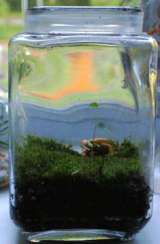
Check out these pictures of Moss Terrariums! Moss terrariums are wonderful in their simplicity and beauty. And you can often make one without spending a penny. Just collect up the moss from the outdoors. Add some small accents and they become a beautiful little world. I have some pictures here and a link to my tutorial on making them. Moss terrariums.
If you never made a terrarium this is a great place to start because it is easy and attractive.
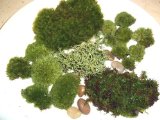
Live Moss Assortment for Terrariums - Frog, Haircap, Cushions, Rocks, Lichen
Will has bought this exact terrarium moss product and he loves it. It comes nice and misty in plastic bags. There is a nice variety of interesting moss.
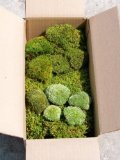
Terrarium Moss Kit
Will has bought this exact moss kit too!

Do you like making projects and exploring a variety of hobbies?
Sign up for my free newsletter. I give you regular updates on hobbies and projects you can make. it is totally free and I don't share your email with anybody.
|
![]()
